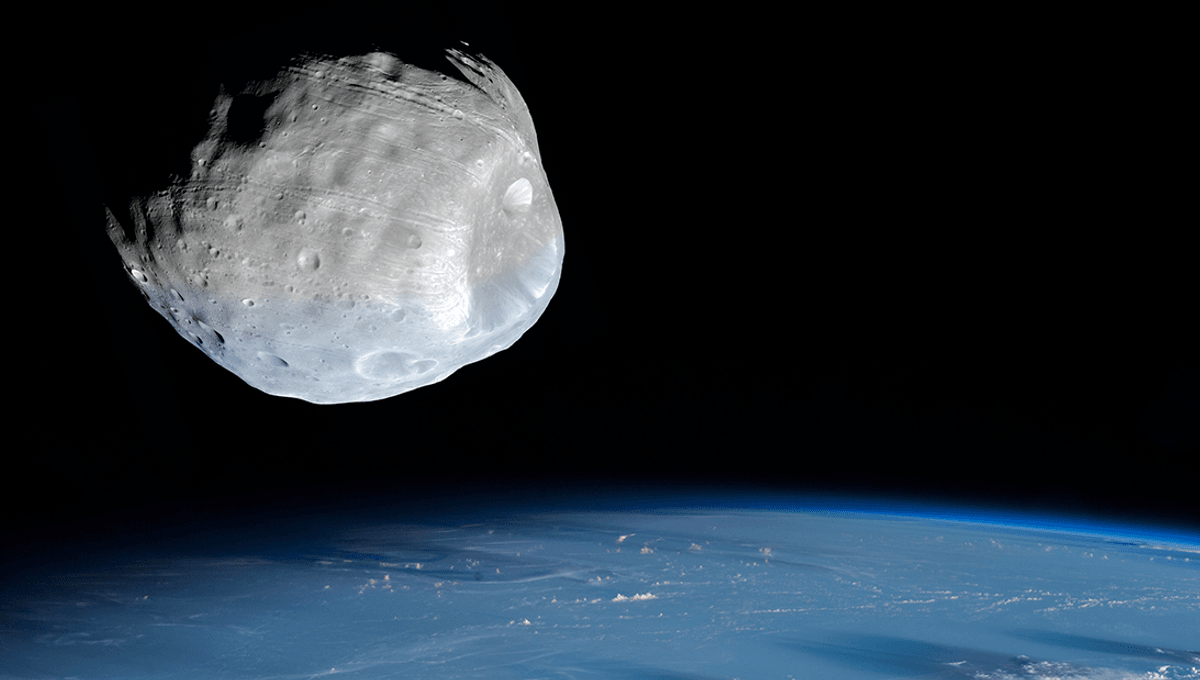
A new study has concluded that Earth’s mini-moons may not have come from the asteroid belt as we once thought, but a source far closer to home.
Mini-moons are small asteroids or comets that can become captured by a planet’s gravity, temporarily orbiting around it until they are flung on their path around the Sun once more. Every now and then, the Earth finds itself with a new companion moon – 2022 NX1 became a mini-moon in 1981 and 2022, for example – and we get an opportunity to look at them up close.
Last year in August, the number of moons orbiting Earth temporarily doubled, admittedly from the low starting point of “one”, giving astronomers the chance to take a closer look. When they did, the object, dubbed 2024 PT5, was found to have a surprising makeup, similar to that of the Moon.
“Our spectroscopic results on the surface composition of 2024 PT5 are not conclusive due to the lack of a near-infrared reflectance spectra, but they are suggestive of a Lunar origin,” the team wrote in their paper in January. “We confirm that 2024 PT5 is a natural object with a visible spectrum consistent with that of an Sv-type asteroid, although it could also be classified as a Lunar mare breccia.”
In short, they believed that our mini-moon could be a piece of the actual Moon Moon, flung off into space following an impact event, before going on its own journey around the Solar System.
That’s pretty surprising, given that astronomers had previously assumed that the asteroid belt was the source of these temporary natural satellites. A new team has investigated whether the lunar ejecta idea is plausible to create these mini-moons and other temporarily bound objects [TBOs] which stay within three Earth radii of our home planet.
“Some recent studies have shown that lunar ejecta can evolve onto quasi-satellite orbits. In particular, (469219) Kamo‘oalewa is an ∼ 50 m diameter asteroid with a spectrum consistent with being space-weathered lunar basalt. Both papers suggest that not only did it originate from the Moon’s surface but that it can be associated with the formation of the ∼ 22 km-diameter Giordano Bruno crater within the last 1 to 10 Myr,” the new team writes in their soon-to-be-published paper. “If this is the case, then it is likely that many more quasi-satellites with lunar-like spectra will be identified in the future.”
Simulating ejections from the Moon following impacts, they found that TBOs can be created frequently, suggesting that around 20 percent may go on to meet the definition of mini-moons.
“In general, the fraction of prompt and delayed TBOs decreases rapidly with a particle’s ejection speed with the only exception being that the fraction of delayed TBOs increases with ejection speed just above the lunar escape speed, presumably because most of the barely-escaping objects promptly become bound,” the team explains.
“Effectively, all the ejecta with launch speeds barely above the lunar escape speed are promptly bound while the maximum fraction for delayed TBOs is ∼ 0.56. A small fraction of ejecta with higher launch speeds can be bound long after ejection, presumably because gravitational perturbations of all the other massive objects in the integration modify their heliocentric orbits so that they can eventually become TBOs in the [Earth-Moon] system.”
While interesting, and possibly an explanation for why mini-moons have a makeup similar to that of the Moon moon, further observations of these objects will be needed to confirm or refute the idea. Knowing how many came from the asteroid belt and how many from the Moon could help us better understand, for example, how craters form on the Moon, and how much material is exchanged between the Moon and the Earth.
The study is available on the pre-print server arXiv and will be published in Icarus.
Source Link: Earth's Mini-Moons Might Come From A Lot Closer To Home Than We Thought